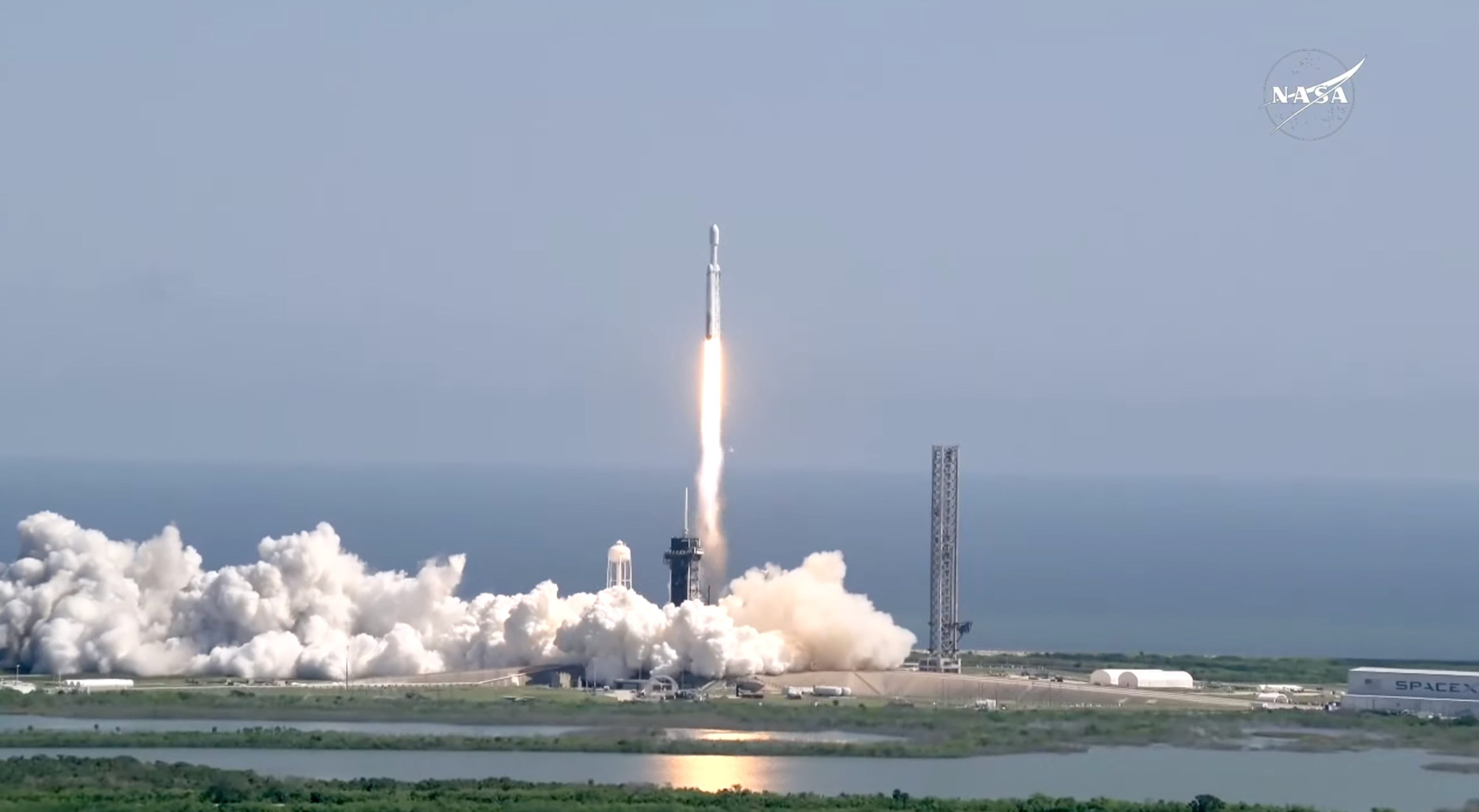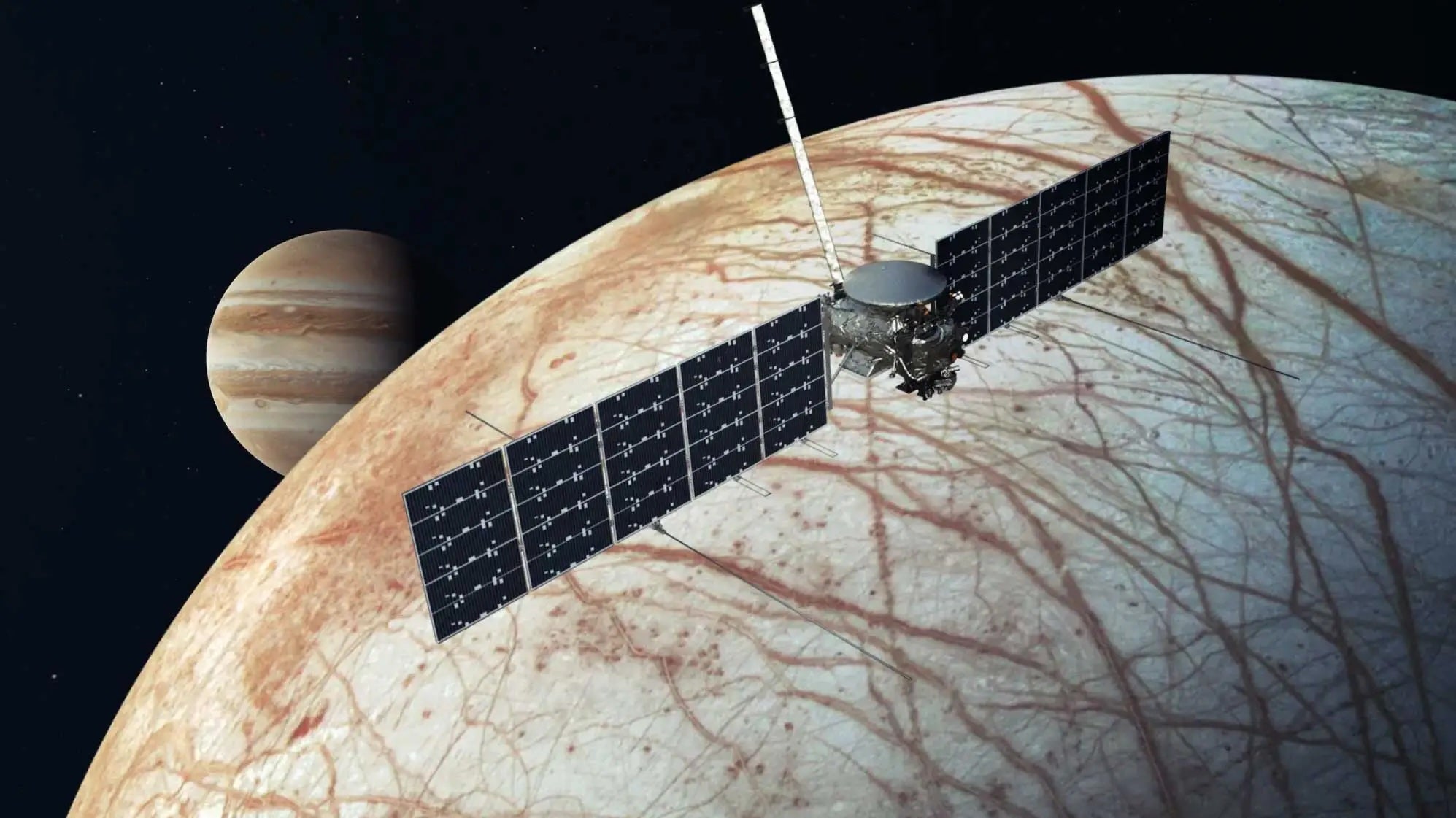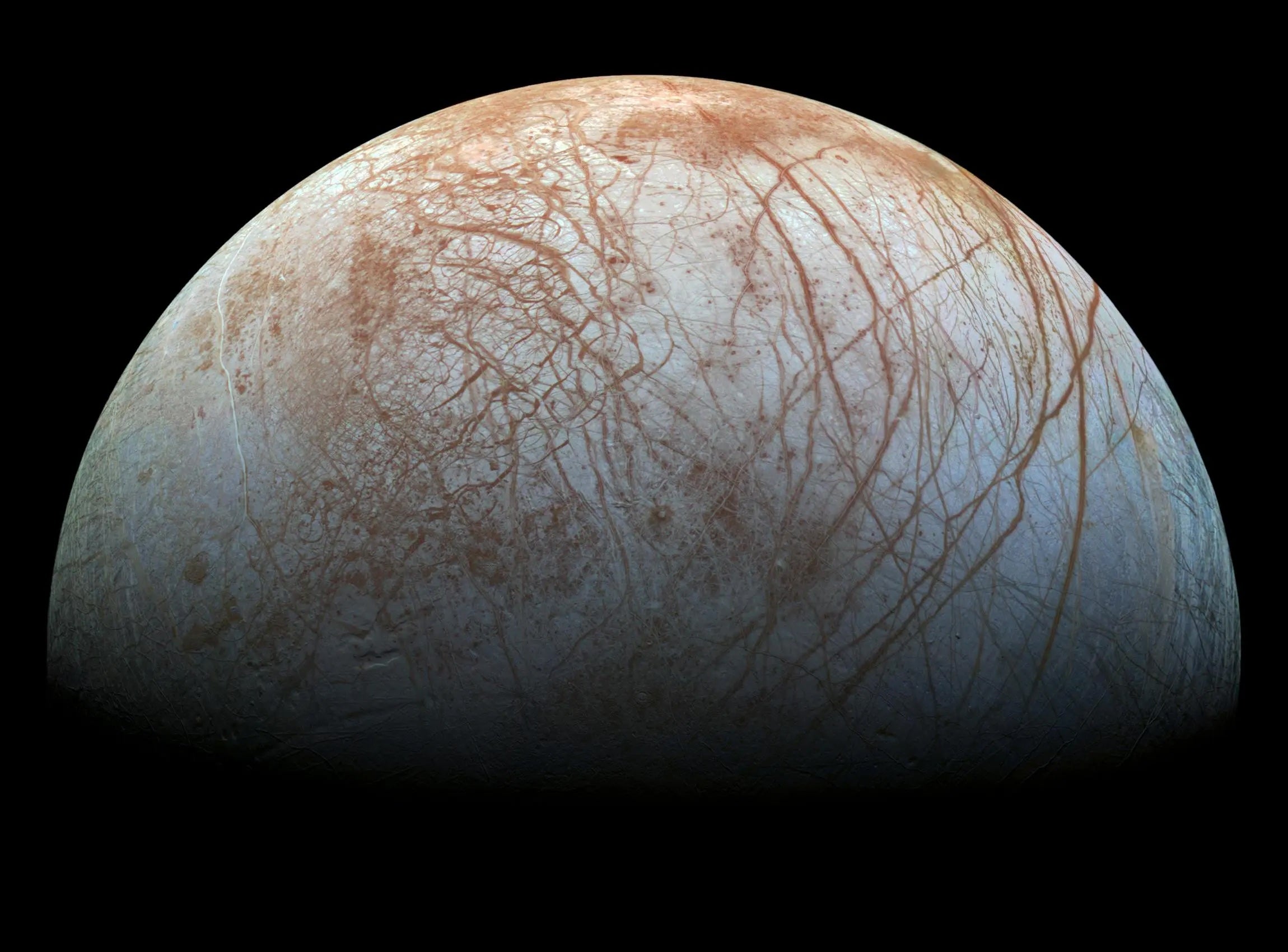Europa Clipper spacecraft launches on historic trip to Jupiter’s ice-covered moon in search of other life
The 100-foot-wide Europa Clipper is the largest spacecraft NASA has ever built for a planetary mission
NASA’s Europa Clipper spacecraft successfully launched Monday afternoon from the agency’s Kennedy Space Center on Florida’s east coast.
The mission marks the first time scientists will explore Jupiter’s icy moon, Europa, which is widely considered the most likely place beyond Earth to have life right now.
Previous research found strong evidence of a global ocean beneath the moon’s frozen crust, with potentially twice as much liquid water as all of Earth’s oceans combined. That’s why scientists suspect Europa may have the essential building blocks for the molecules of life: organic compounds. The mission will help to confirm whether there are organic compounds on the moon and also look for evidence of energy sources on Europa’s surface.
The massive spacecraft, which is bigger than an NBA basketball court, is the largest spacecraft NASA has ever built for a planetary mission. Stored in a protective nose cone, it lifted off aboard a SpaceX Falcon Heavy rocket at 12:06 p.m. EDT.
Its initial launch date was delayed due to the impacts of Hurricane Milton, which forced the Cape Canaveral facility to shut down amid the storm.

The spacecraft’s main body carries nine science instruments, including radar that will penetrate Europa’s ice, cameras that will map the moon, and tools to tease out the contents of its surface and atmosphere. It is also loaded with more than 6,000 pounds of propellant, to fuel its journey.
As the rocket’s expendable boosters separated and its core part was sent back down to the Atlantic Ocean, a smaller second section fired its engine to help Europa Clipper escape Earth’s gravity. About 50 minutes after launch, the nose cone separates, splits in two, and also falls back down safely.
About an hour after launch, the spacecraft will separate from the rocket’s upper part, and NASA anticipates to receive stable communication from the spacecraft about 19 minutes later. Three hours after launch, Europa Clipper is expected to unfurl its pair of massive solar panels and point them at the Sun.

At this point, mission controllers start work on getting the spacecraft into its planned operating mode. They’ll have three months of tinkering, to ensure every piece of hardware and software is functioning as expected.
It isn’t until April 2030 that Europa Clipper will actually begin to orbit Jupiter. It will take a 1.8 billion-mile-long trip to reach the fifth planet from the Sun, looping around Mars and Earth to gain speed. In 2031, the spacecraft will fly by Europa 49 times, coming as close as 16 miles from the surface. The orbit is designed to limit exposure to the gas giant’s intense radiation, which is caused by the interaction between Jupiter’s strong magnetic field and charged particles released from its other moon, Io.
Jupiter has 95 moons, and its four largest were the first moons discovered beyond Earth. Last year, NASA’s Juno mission found that there are mineral salts and organic compounds on the surface of Ganymede.

In addition to looking for organic compounds, the Europa Clipper mission aims to determine the thickness of the moon’s shell, to characterize its geology, and to understand the shell’s interactions with the ocean below it.
NASA says it will help scientists to better understand the astrobiological potential for habitable worlds beyond our planet.
“If we find those building blocks, we will transform what we know about how life forms—and our place in the universe,” NASA Administrator Bill Nelson wrote in an op-ed published in Newsweek on Monday.
Join our commenting forum
Join thought-provoking conversations, follow other Independent readers and see their replies
Comments